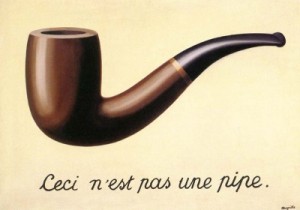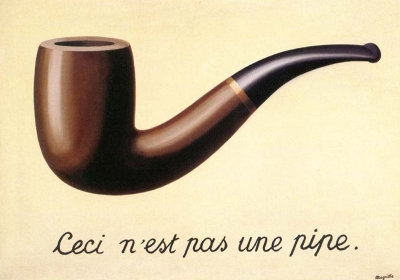Clutter/Declutter: Transitioning to a More Minimalist Lifestyle
 Architect Mies Van der Rohe famously said “less is more”. When your home is a small house or apartment, this phrase can become a lifeline – especially if your taste in décor is contemporary. It can be very difficult to change from a hard-boiled packrat to minimalista, but the rewards are many.
Architect Mies Van der Rohe famously said “less is more”. When your home is a small house or apartment, this phrase can become a lifeline – especially if your taste in décor is contemporary. It can be very difficult to change from a hard-boiled packrat to minimalista, but the rewards are many.
Over time I have developed a need for a certain amount of negative space in my interiors. As a girl I covered every conceivable inch of wall space in my room with images, every surface with loved objects and things I had made. Into my twenties the packrat tendencies solidified. Books, tools, records, clothes, artwork, curios, and design accessories abounded until my apartment became as full of treasure as Aladdin’s cave. I was never at the point where I was paying to store things, but I was headed there.
In my very late 20’s something happened: I started getting a feeling as though I couldn’t breathe. I determined that this sensation wasn’t physical, it was emotional – I was so surrounded by stuff that I felt crowded all the time. Any attempt at cleaning involved shifting around so much stuff that I felt like I was sucked into a game of furniture Tetris every time I wanted to push the vacuum. I was drowning in my own possessions.
That’s when the long road to less began for me. That’s the secret – as with any kind of recovery, you have to want to change, and be committed to going through the painful stages it demands.
 Make no mistake – it was painful. Getting rid of artwork you’ve created and heirlooms are especially difficult. We keep objects because they remind us of loved ones or ideas, or just because they are beautiful or fun. The key is to remember that your grandfather’s favourite reading chair is not your grandfather, or your love for him. As René Magritte conveyed in his famous painting Treachery of Images, “this is not a pipe”. It is a picture of a pipe. The symbol is not what it represents.
Make no mistake – it was painful. Getting rid of artwork you’ve created and heirlooms are especially difficult. We keep objects because they remind us of loved ones or ideas, or just because they are beautiful or fun. The key is to remember that your grandfather’s favourite reading chair is not your grandfather, or your love for him. As René Magritte conveyed in his famous painting Treachery of Images, “this is not a pipe”. It is a picture of a pipe. The symbol is not what it represents.
Once you have made that connection, working on the problem becomes possible. What follows are strategies for reducing clutter in your home. Remember, this does not need to be one great traumatic upheaval; it can be a process that takes years. Persistence is what wins in the end.
Putting Your Treasure Trove on a Diet
How do you decide what stays and what goes? By its usefulness. I’m a fan of (if not a strict adherent to) to the “1 year rule”: if something hasn’t been used in a year, you’re unlikely to use it again at all. Hard core pack rats have difficulty with this one – their argument can be summed up as “it might come in handy someday”. While I acknowledge the special thrill of being able to fix something with a long-hoarded jewel, I am not convinced it justifies entire rooms full of odds and ends, the collapse of civilization notwithstanding. Where I personally draw the line is if the item is in good repair or not. I don’t tend to keep pieces of things, but entire things that work well. I also consider the amount of room an item occupies.
At a certain point, you will need to face the fact that you are not going snowboarding/making wine/racing ostriches any more. For me, three years is the limit: if I haven’t used something in three years it needs to go (but I make exceptions – the time limit for me is 1 year for clothes, and 5 for books). The point is not where exactly that cut off point is for you, but that there is a cut off point. The exact time you will allow unused things to take up space can become stricter over time, or be stricter or weaker for different types of things.
Once you’ve decided that an item is low-hanging fruit, there are great ways to give it a new home. It’s up to you whether you give, sell or donate, but I always try to give away items I can, and match them with people who will really enjoy them.
- For objects of sentimental value, give them to someone who will love them. Family members often enjoy receiving heirlooms.
- For decorative items, find someone who has a collection of similar items. An Egyptian lantern that sat in my basement for years has new life and purpose in my sister’s lantern collection on her deck.
- Make a bit of money by selling nicer objects. Online sales listings can be great if you don’t mind shipping preparations or strangers at your door. Antique dealers and consignment stores are also a great alternative. Garage sales are also an option if getting rid of things is more important than getting a better price.
- When all else fails, donate things to charity.
Collections can be easier to deal with: you don’t have to get rid of everything, you can just weed the garden, so to speak. Decide how the collection will be displayed or stored, and use that to determine how many items have to go in order for the collection to fit. Start by choosing the obvious favourites as keepers, and proceed until you know which ones have to go through the process of elimination. This can be easier than actively trying to pick ones you don’t like, if the problem is that you like them all. Music or photograph collections are easy to downsize if you are prepared to do the work of digitization.
For items I found particularly hard to part with, I took photographs of them. Having a smaller, easier way to store memories can help you let go. To my surprise, I’ve found that over the years I have never looked at them.
Controlling the Purchase of New Things
Impulse purchases are a huge source of clutter. Compulsively buying new things all the time may be good for the economy in the abstract sense, but it’s bad for your personal finances and for the environment. Almost everything ends up in a landfill one day, and pollution from manufacture and transportation is heartbreakingly destructive.
- Stop buying new things unless they have a very specific purpose or place in your home. Train yourself to appreciate things, and even want them, without having to buy them.
- Adopt my rule: for anything you buy, something else has got to go to make room. This makes buying a lot harder as time passes, because you have to think of what has to go.
- Before you buy, know where the object will be stored when not in use.
- Refuse to buy before you find the perfect fit. Don’t buy the cheap coffee table to make do until you find the perfect one. Save the money and put it towards one you really like. Use a stack of books or a box – anything – until you find what works.
- Have a plan before you buy decorative objects. Tastes can change over time, and planning the décor of your space can help you decide if an object is worth buying in the long term.
- For holiday giving, make sure loved ones know what you would enjoy receiving. When I started distributing my wish list years ago I got laughter from my family, but now I am asked for it if Halloween rolls by and I haven’t created it. The important point is to avoid giving stuff to people that they don’t want but will feel guilty about not keeping.
The Promised Land
Why go through all of this? The psychological rewards are subtle but profound: you will simply feel better when you have more space. Have you ever walked into a large building and just felt yourself emotionally expand? It’s like that. I would also combine it with the feeling you get when you’ve spend a day cleaning, and wake up the next morning to a beautiful place that looks new again.
What we see and how we react to it influences our moods and our overall sense of wellbeing. I don’t know why, but we get pleasure and happiness from beauty, and this can open up new possibilities in our lives. When we feel good, we’re more likely to do what’s right for ourselves. Since I began my mission to reduce my clutter, there are exactly two items that I have gotten rid of that I now regret (both are articles of clothing). I don’t feel upset about this, however, as the benefits outweigh the minor regret by an astronomical amount. It has been more than worth it.
Getting rid of items can also be part of your décor education – whittling down your possessions over time can make you feel like Michaelangelo carving away stone to find David. I will leave you with a final thought, a quote I came upon not too long ago and has been of immense help to me in moments of weakness:
“There is no design without discipline. There is no discipline without intelligence.”
by Jennifer Priest
Follow me on Google +


Pingback: When More is More: Layering Case Study » Housecraft: DIY House, Garden and Interior Design()